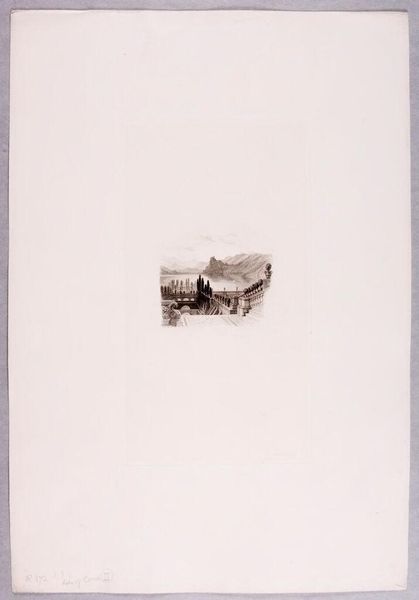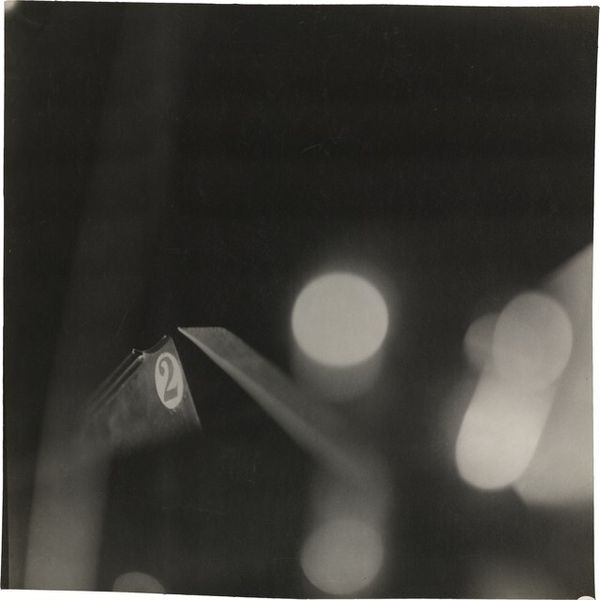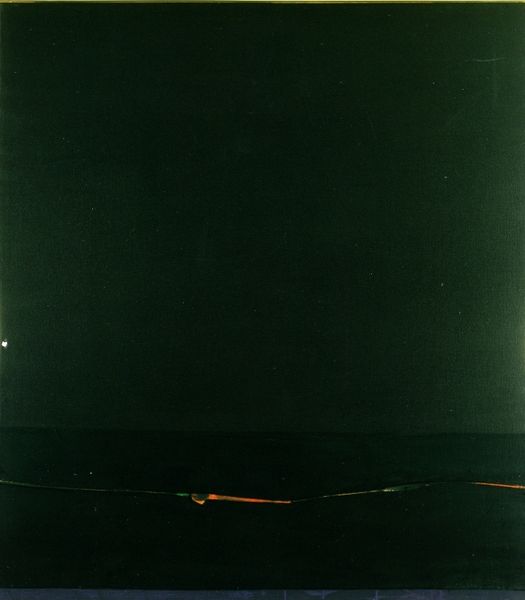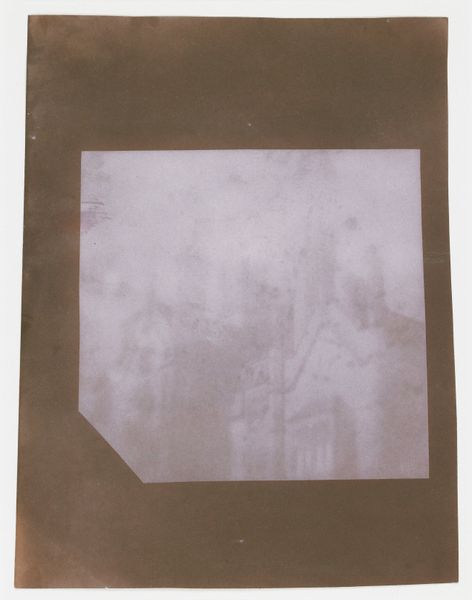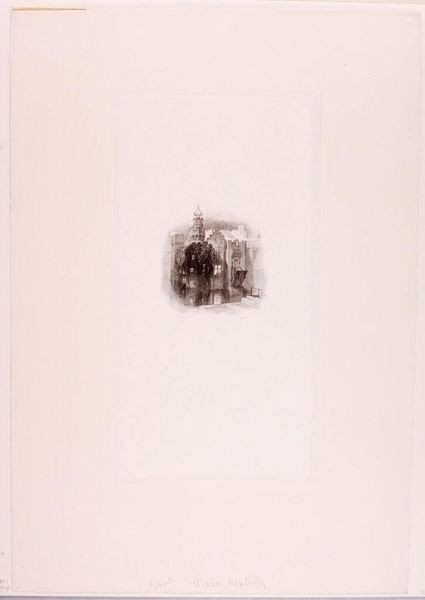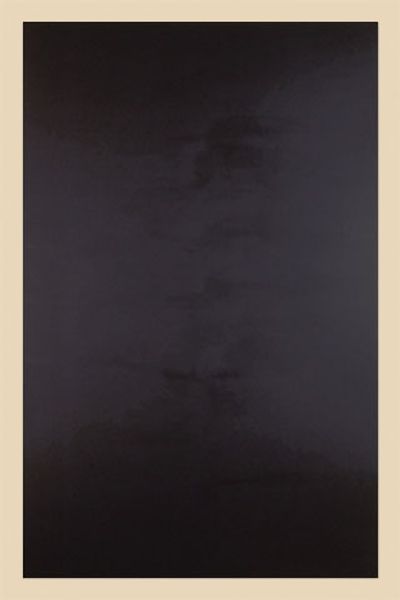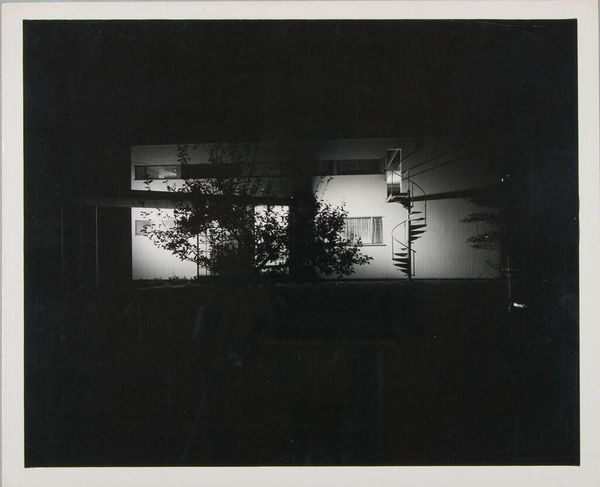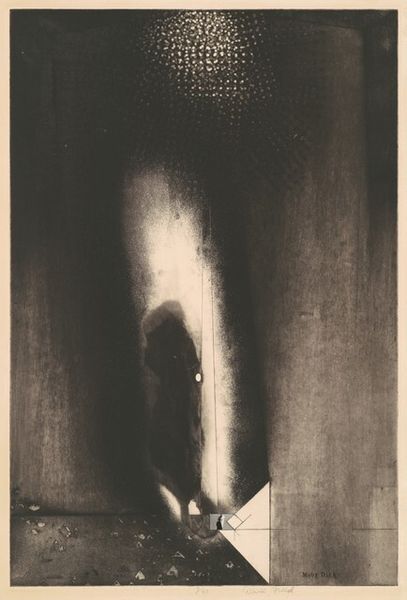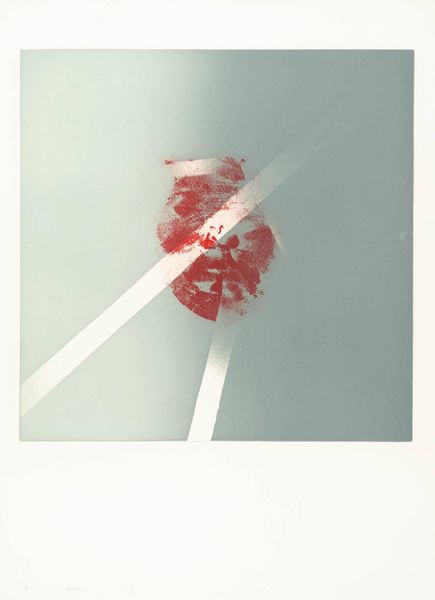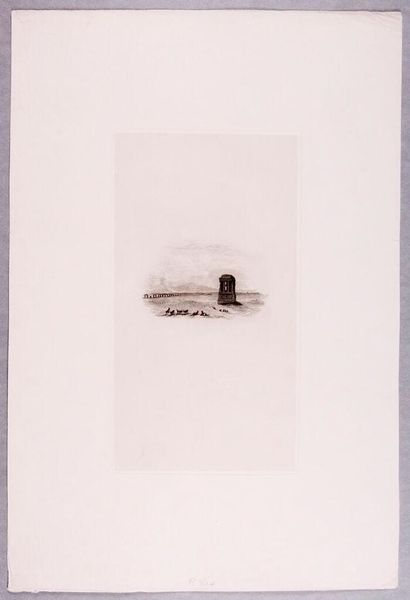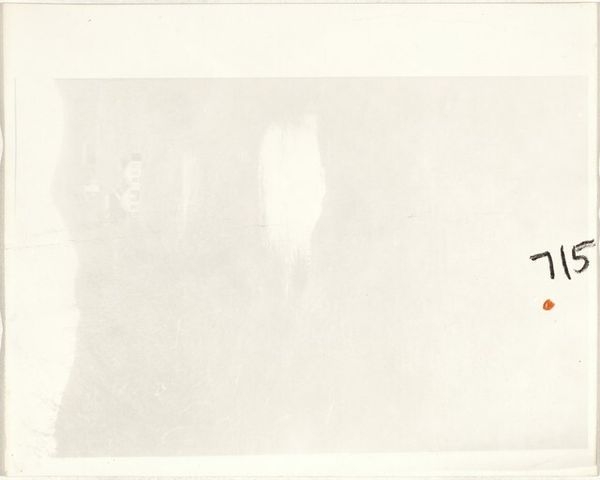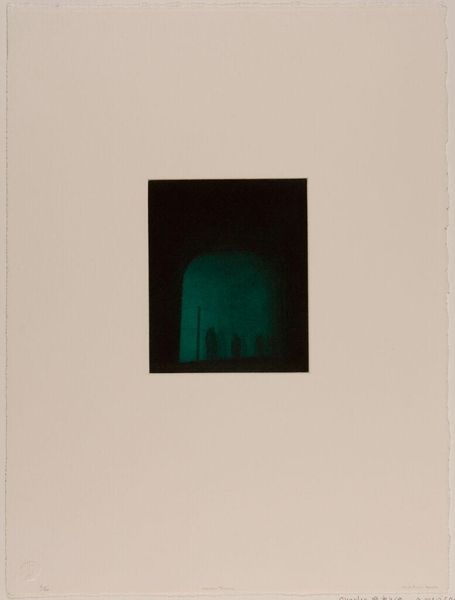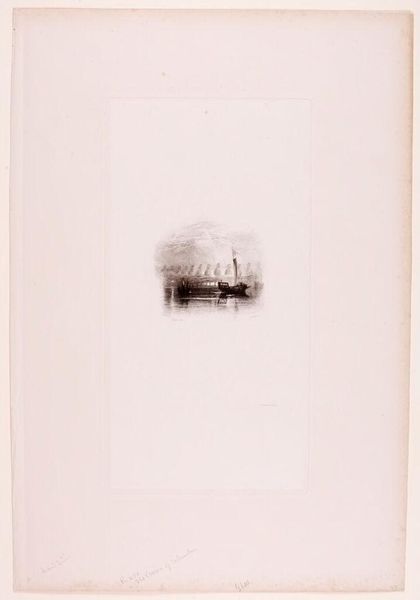
photography
#
still-life
#
contemporary
#
conceptual-art
#
photography
#
modernism
Dimensions: image: 16.5 x 21.7 cm (6 1/2 x 8 9/16 in.) sheet: 35.3 x 28.9 cm (13 7/8 x 11 3/8 in.)
Copyright: National Gallery of Art: CC0 1.0
Curator: Robert Frank created this intriguing photographic print titled "The Japanese Flamingo in Pablo's Bottle" in 1997. Editor: Immediately, I’m struck by the bleakness of it. It’s a still life, yes, but the muted monochrome palette and grainy texture imbue the subject matter with an almost oppressive quality. What is your read? Curator: I agree it departs significantly from typical still-life compositions. The bottle is starkly simple. Its form contrasts sharply with the rather forlorn flamingo inside. Notice how Frank centers the bottle atop what appears to be a rough, stacked block. This creates a clear vertical axis that dominates the composition, leading the eye upward. Editor: And that ghostly orb to the lower left? Its light feels almost accusatory, positioned opposite the weight of the main subject. I find the title a fascinating tension between the exoticism of the flamingo, the implied celebrity of Pablo, and the banality of a bottle. Perhaps Frank comments on how cultures and even individuals get appropriated, their essence trapped and displayed. Curator: I am very much interested in the lines of confinement. Look closely; Frank prints visible smudges and scratches on the emulsion, disrupting its clean finish. Also consider the deliberate inclusion of hand-written script surrounding the print. The entire photographic plate serves as an intentional surface. This disrupts the very idea of representational "depth". It insists on the artwork's constructed, material reality. Editor: You've captured that tension perfectly. The artist offers intimacy with the form, yet his composition traps meaning within these intentional decisions. Ultimately, this image strikes me as less about visual pleasure and more about inviting scrutiny towards the complicated act of looking. Curator: Indeed. Frank forces the viewer to recognize the constraints and artificiality inherent in any visual representation. Editor: And it also, maybe inadvertently, makes me feel unsettled, perhaps due to my own position in the process of objectification. Thank you for providing this nuanced structural reading.
Comments
No comments
Be the first to comment and join the conversation on the ultimate creative platform.
